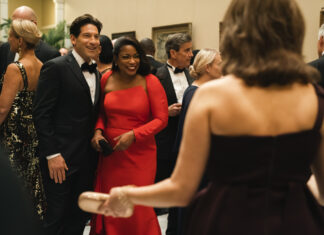Moscow’s Department approved the object of protection another unique architectural monument in the centre of the capital mansion of the famous manufacturer and philanthropist Savva Morozov. Experts have confirmed the historical and artistic value of the building’s exterior and interior wrought metal fence with a gate and six sculptures in the garden in the yard.
the author of the project of two-storeyed house to the address: street Spiridonovka, 17, building 1, at the end of the XIX century was a famous architect Fyodor Shekhtel. And the decoration of the halls of the mansion worked with the artist Mikhail Vrubel. This luxurious gift Savva Morozov did his beloved wife, Zinaida Grigorievna. After her husband’s death she owned the mansion until 1909, then sold it to a collector and philanthropist Mikhail Ryabushinsky. In the years of Soviet power the building was nationalized, it became the seat of the provincial food Committee, and in 1929 the people’s Commissariat of foreign Affairs. Today in a historic mansion houses the reception House of the Ministry of foreign Affairs of the Russian Federation. In 1996 there was a meeting of the “Big eight.”
As noted by the head of the Agency, the subject of protection of the monument included the composition and architectural-artistic design of the facades of the late nineteenth century, including size, shape, location, and decor window and door openings, basement, main entrance pass with pointed arches, a double sided ramp and staircase, two terraces on a high podium with Lancet arcades, stairways, and their enclosures (metal, braces, brick, end-to-end, on poles), flowerpots, columns, pinnacles, turrets with scalloped ends, moulded and carved decorations including panels with decorative filling, medallions, garlands, ribbons, stylized roses and shamrocks, masks, floral and geometric ornament. Valuable is also recognized as metal art of the late nineteenth century, including the cast iron railings of balconies, terraces, completion of gutters in the form of masks, gargoyles and sculpture of the Chimera on the fence of one of the balconies.
In 1995 the building caught fire, which destroyed more than half of the historic interiors of the house, but the design of the mansion, the decoration of his interior decoration and facades is almost not affected. The surviving interior details of decor were restored and preserved by forces of 20 organizations of different countries on the basis of extant original sketches Schechtel. Experts were rescued three panels — “Morning”, “Noon” and “Evening” by Mikhail Vrubel, which depicts the awakening of nature in the form of allegorical female figures, like fairy-tale mermaids.
in addition, in the mansion you can see the Monier arches, stucco and carvings, cornices, coving, friezes (sculptured, scenic), sockets, coffered ceilings, columns and pilasters of artificial marble with stucco capitals, metal decorative panels. The house has a built-in wooden furniture, designed by Fyodor Schechtel, including chairs-thrones, grandfather clock in the form of a Gothic tower and desktop. Preserved Grand staircase with a sculptural group created by Mikhail Vrubel “Robert and nuns”, Gothic fireplaces, mirrors, lighting the end of the XIX century — lightings-lamps, chandeliers, flower lamps, sconces, and more.
Experts have also confirmed the value of the architectural-artistic design of the fence with a gate end of the nineteenth century, including rectangular columns with shaped niches, pylons of the gate with decorative lamps in the end and openwork metal grille with completion in the form of animal faces. In addition, the subject of protection includes six sculptures in the garden is the female figure, and the figure of the angel.
According to Alexey Emelyanov, now all the restoration work the house will be subject to the approved of the subject of protection.
Fyodor Osipovich Shekhtel (1859-1926) — Russian and Soviet architect, painter and graphic artist. Considered one of the world’s leading architects of the late XIX — early XX century. In the early years of his career experimented with different architectural styles — from Gothic to Russian style. Art historians call Schechtel father of Russian modernism, although he had no professional architectural education. In addition to the house of Zinaida Morozova, his authorship in Moscow belong to the Ryabushinsky mansion (ulitsa Malaya Nikitskaya, house 6/2, building 5), where in the 1930s he lived Maxim Gorky, the famous China House address: Myasnitskaya street, building 8/2, house A. I. Derozhinskaya with a black spider on the door (Kropotkinskiy pereulok 13, building 1) and the home of the Schechtel in Ermolaevsky lane (house 28, building 1). The architect was also reconstructed building of the Yaroslavl station and the Theatre named By Stanislavsky and V. Nemirovich-Danchenko.
to Take a virtual walk through the mansions Morozov, Derezinski, Schechtel, as well as other monuments from the comfort of home on the portal “Learn Moscow”. It contains all 17 of the online tours of the historical buildings of the capital.
the Preservation and restoration of architectural monuments in Moscow — the most important direction in the work of the Department of cultural heritage. Many monuments find a new life, adapt them for modern use, while maintaining the historical appearance of the capital. Since 2011 the city has restored more than 1,400 objects of cultural heritage, of which 203 in 2019.











































